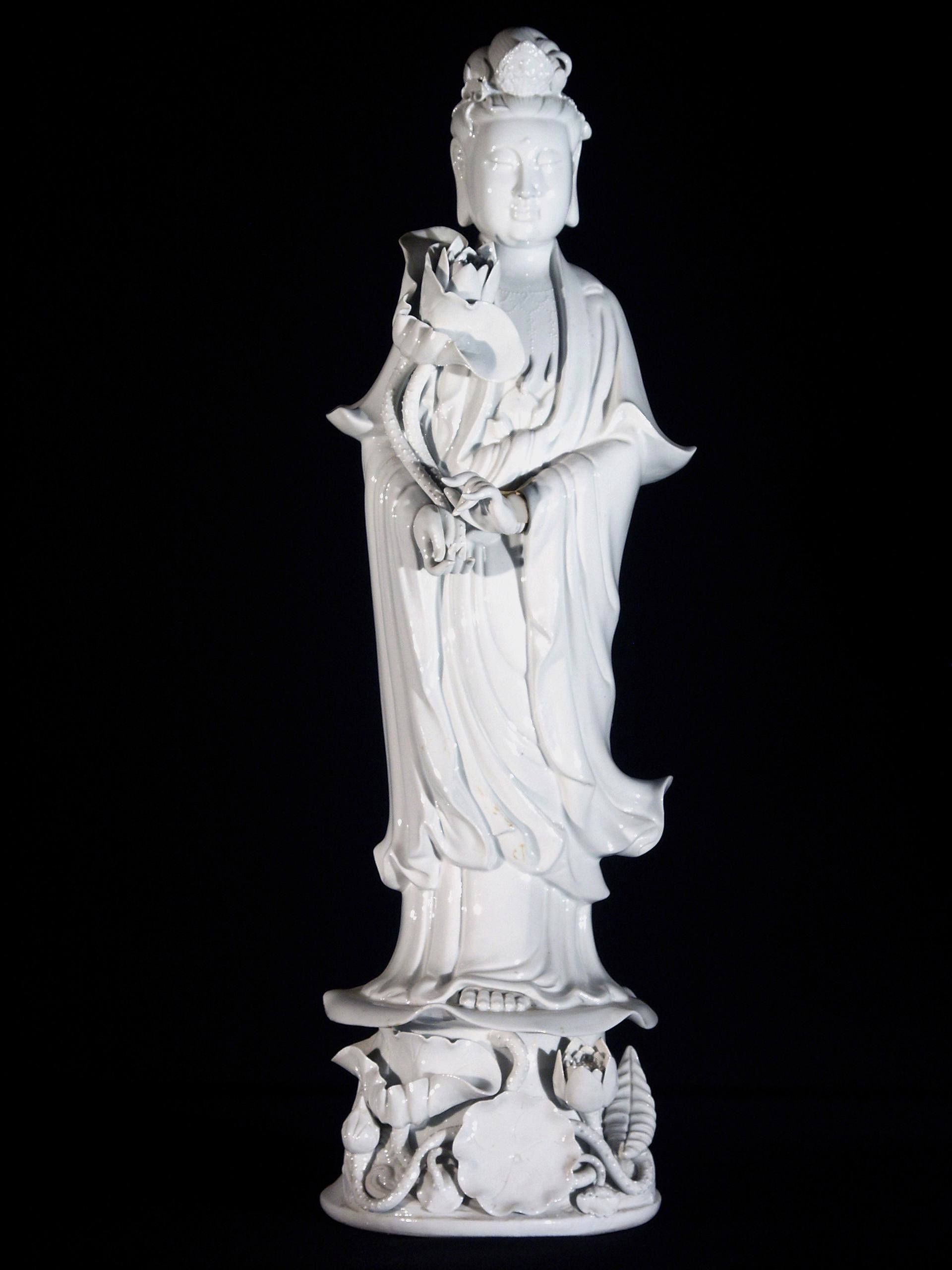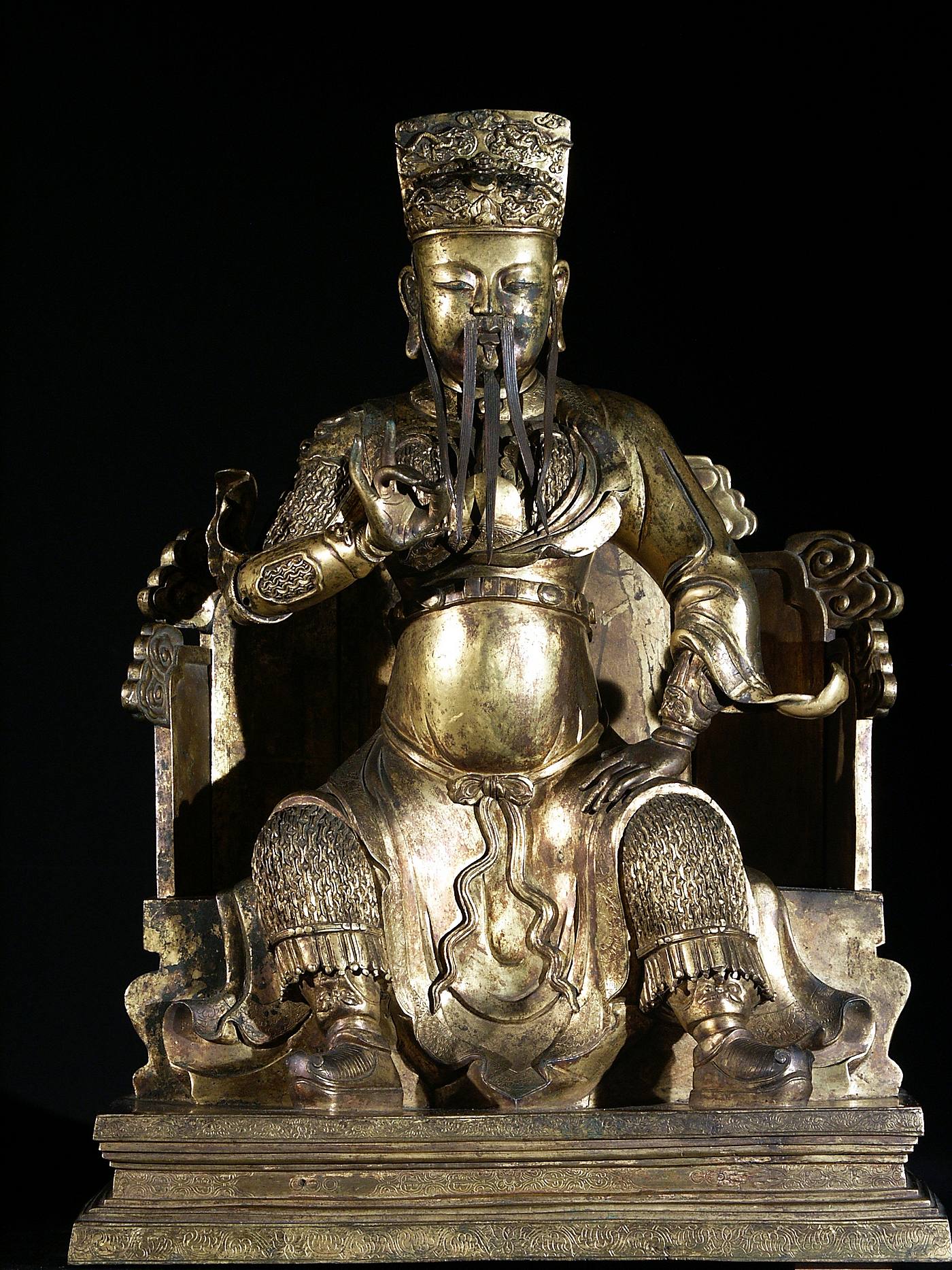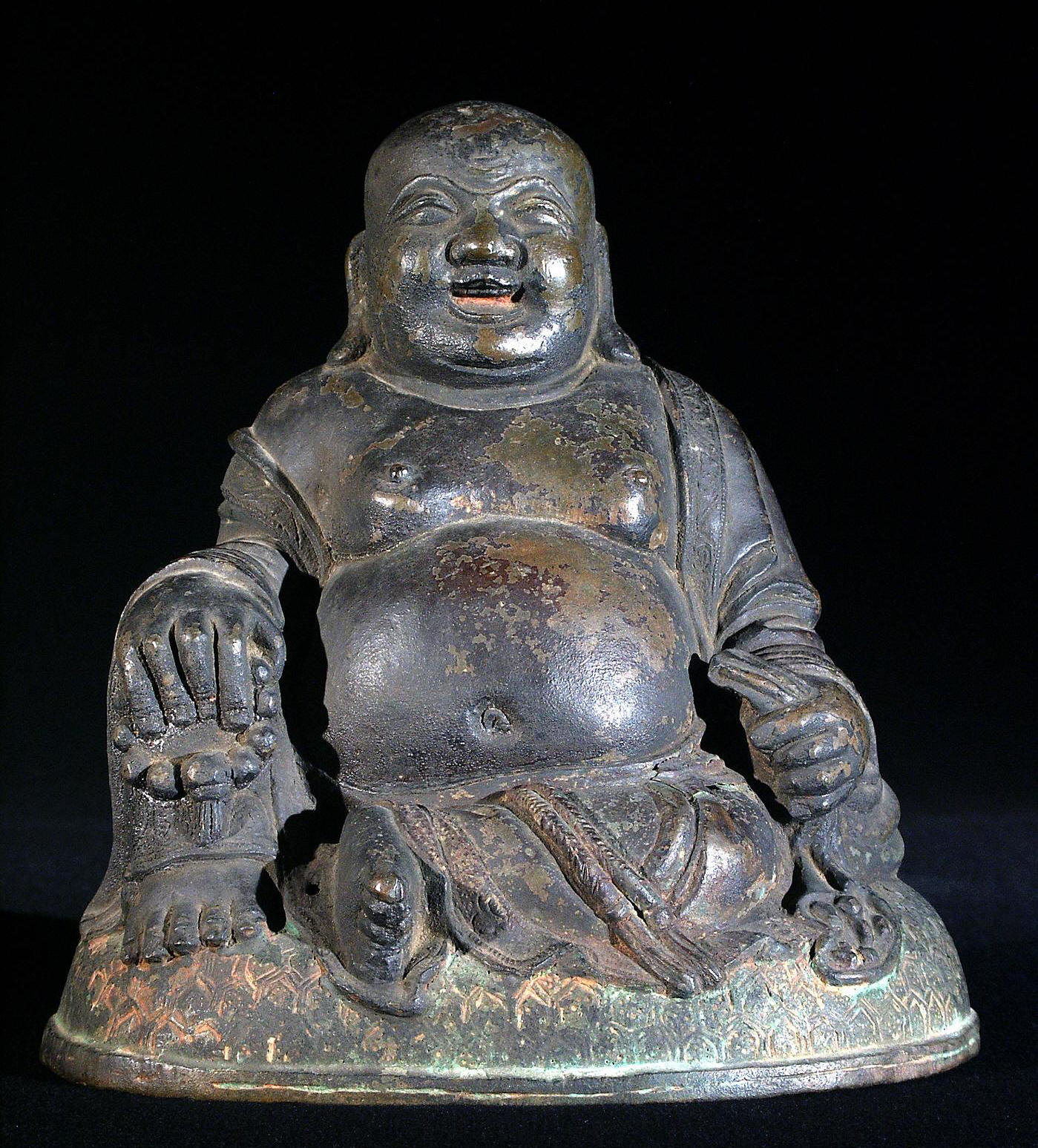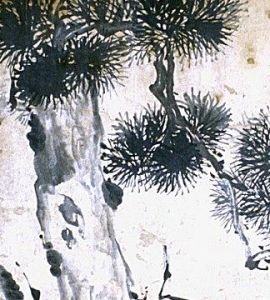Religious Images

Prof. Nicoletta Celli
The Museum holds a rich selection of statuettes made of various materials depicting gods, heroes and semi-divine beings from the three chief religions in China – Buddhism, Taoism and Confucianism.

Guanyin in porcelain
All three religious traditions have a history stretching back many hundreds of years during which they have constantly interacted, through either repulsion or attraction, but always helping each to define itself more clearly.
While Taoism and Confucianism are the earliest, and indigenous, religions of China, Buddhism was adapted from its Indian origins to suit Chinese culture, giving rise to forms of philosophical and popular synchretism as it came into contact with the other traditions.
The Buddhist figures include representations of Guanyin, the bodhisattva of compassion (known as Avalokites´vara in India), who enjoyed an extraordinary iconographic development in China, as a result of the interweaving of the traditional mythology with local legends and tales.
The museum collection records a variety of folk iconographies of Guanyin distinguished by their unorthodox female appearance: one porcelain statuette depicts the bodhisattva with the characteristic attribute of a lotus flower and two wood carvings depict the Granter of Children Guanyin and the Fish-basket Guanyin.

Guandi
The figure of Guan Di (or Guanyu) belongs to folk religion, although he is also worshipped in Taoism.
This historical figure was a valiant general who fell in combat in the third century and was later considered a divinity able to give protection against enemies and ensure the triumph of justice and honesty.
He is depicted seated on a throne with a proud expression and martial bearing.

Budai Heshang, Monk
The other Chinese Buddhist iconographies to stand out include statuettes of Budai Heshang, the monk with the cloth sack, with his bloated belly, jovial smile and typical bulging bag, considered by folk tradition to be Maitreya, the Future Buddha.
The guardian divinities are represented by a Heavenly King (tianwang), the protector of space and Weituo, the eternally young god, guardian of monasteries and the Buddhist monastic community.

